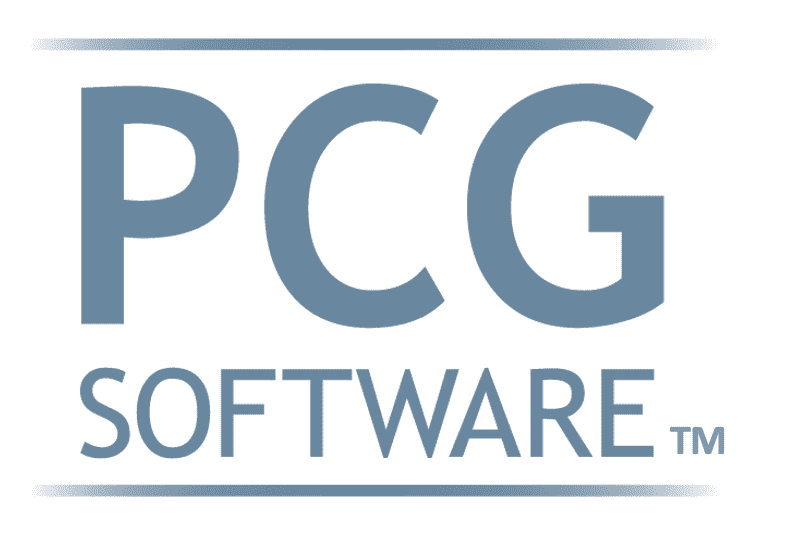Health Plan Strategies for Natural and Man-Made Disasters
The recent wildfires in Los Angeles have caused unprecedented damage, with economic losses estimated between $135 billion and $150 billion. While local, state, and federal government organizations have provided initial financial resources to help empower local construction companies to rebuild homes and communities, the question we address is…
How do health plans react to natural or man-made disasters when the community faces millions, if not billions, in time-sensitive rebuilding?
How does your health plan continue to provide coverage, new authorizations, and support for clinics and hospitals during these uncertain times?
These disasters have profoundly impacted health plans, necessitating swift and effective recovery strategies to ensure continuity of care and compliance. This article will highlight suggestions for maintaining continuity of care for your members, providing provider support, and ensuring maximum compliance and cost savings during these troubled times.
- Insurance Coverage for Fire-Related Healthcare Needs
- The Economic Impact of Wildfires on Health Plans
- Emergency Preparedness Plans for Health Plans
- Policy Changes in Response to Wildfires
- Addressing Disparities in Healthcare Access After Fires
- Claims Management After Fires
- Ensuring Continuity of Care
- Compliance with California’s 30-Day Claims Payment Law
- Using AI and Technology for Recovery
- Addressing Mental Health Needs Post-Disaster
- Building Resilient Health Plans for the Future
- Collaboration with Community Resources
- The Role of Member Education in Disaster Recovery
- Case Studies: How Health Plans Recovered from Previous Fires
Introduction: The Impact of Fires on Los Angeles Health Plans
The wildfires have led to significant challenges for health plans, including a surge in claims, disruptions in provider networks, and member displacement. The destruction of medical facilities and the displacement of healthcare providers have further strained the healthcare infrastructure. California Healthline
Insurance Coverage for Fire-Related Healthcare Needs
Clear communication about insurance coverage during wildfires is critical for supporting members in their time of need. Health plans must proactively inform members about what is and isn’t covered during a disaster, such as emergency care, telehealth services, and mental health support. Misunderstandings about coverage can exacerbate stress for affected individuals.
Navigating health insurance policies after a disaster poses significant challenges, especially for displaced members who may struggle to find in-network providers or access prescription refills. Simplifying claims processes and offering dedicated support lines can help members during these difficult times.
The Economic Impact of Wildfires on Health Plans
Wildfires can place severe financial strain on health plans due to increased claims volumes for injuries, property damage, and mental health services. Network disruptions caused by facility closures or displaced providers further complicate cost management.
To manage these costs without compromising care, health plans can leverage AI tools like Virtual Examiner® to identify potential overpayments and streamline claims auditing. Diversifying provider networks and investing in telehealth infrastructure are additional strategies to mitigate financial risks while maintaining high-quality care.
Emergency Preparedness Plans for Health Plans
Proactive planning is essential for health plans to navigate natural disasters effectively. Developing comprehensive emergency preparedness plans that address continuity of care, network flexibility, and member communication can ensure smoother operations during a crisis.
Disaster drills and simulations are vital for readiness. They help teams identify gaps in their response protocols and ensure that employees are familiar with emergency procedures, reducing response times and improving outcomes when disaster strikes.
Policy Changes in Response to Wildfires
Wildfires have exposed significant gaps in existing regulations, underscoring the urgent need for policy adjustments to support health plans during future disasters better. Current regulations often fail to account for natural disasters' unique challenges, such as the surge in claims, displacement of members, and increased demand for services. Extending claim payment deadlines or creating exceptions for fire-affected areas can help ease operational pressures on health plans while ensuring members receive timely care.
An influx of authorizations for fire-related medical services adds another layer of complexity. Wildfires often result in injuries or conditions requiring rarely performed procedures, such as specialized burn treatments, respiratory therapies, and mental health interventions tailored to trauma survivors. Health plans must adapt to unfamiliar or seldom utilized medical services, ensuring proper coverage and reimbursement while collaborating with providers to determine appropriate billing codes and rates.
Advocating for legislative measures that streamline claims and authorization processes during crises is critical. For example, creating standardized disaster-related billing codes and expedited pathways for authorization approvals can improve efficiency and reduce administrative burdens. Policymakers should also consider regulations that enable the rapid deployment of additional network providers and temporary facility expansions in affected areas.
Collaboration with policymakers and industry stakeholders is essential to addressing these issues and ensuring preparedness for future crises. By enacting thoughtful policy changes, health plans can enhance their ability to respond effectively to wildfires, mitigate disruptions in care, and build resilience in the face of future disasters.
Addressing Disparities in Healthcare Access After Fires
Wildfires disproportionately affect vulnerable populations, including low-income communities, seniors, and those with chronic health conditions. These groups often face more significant barriers to accessing care during and after disasters, such as transportation challenges or lack of digital literacy for telehealth services. Health plans can address these disparities by expanding network coverage to underserved areas, partnering with community organizations, and providing targeted support for at-risk members. Prioritizing equity in disaster response ensures that all members receive the care they need, regardless of their circumstances.
Claims Management After Fires
Health plans are experiencing an increase in claims related to fire-induced injuries, property damage, and mental health services. Expedited claims processing is crucial to support affected members during this crisis. Implementing AI-driven claims auditing tools can enhance efficiency and accuracy in processing these claims. PCG Medical Coding
Ensuring Continuity of Care
Maintaining access to healthcare for displaced members during and after wildfires is vital. Telehealth services have become indispensable, allowing patients to consult healthcare providers remotely, especially when physical access to clinics or hospitals is limited. Health plans must ensure their provider networks are regularly updated and capable of offering virtual consultations to meet the increased demand. This includes expanding partnerships with telehealth platforms and ensuring members understand how to access these services.
Wildfires often necessitate the creation of makeshift emergency centers in affected areas to address immediate healthcare needs. These temporary facilities play a critical role in providing care for injured individuals, managing chronic conditions, and addressing mental health crises. Health plans should work closely with local authorities and emergency responders to integrate these centers into their networks, ensuring members receive covered services without delay.
Patient transport becomes another critical factor during such crises, as members may need evacuation or transport to operational facilities. Health plans should collaborate with ambulance providers, air transport services, and community organizations to establish swift and efficient patient relocation protocols. Health plans should communicate coverage for emergency transportation services to members to reduce stress during these already challenging situations.
Out-of-network billing poses a significant challenge during disasters, as members may receive care from providers not contracted with their health plans. Health plans must adopt temporary policies to address this issue, such as waiving out-of-network fees or creating reimbursement agreements with non-contracted providers. Transparent communication with members and providers about these temporary measures ensures smoother claims processing and minimizes financial burdens for all parties involved.
By addressing these critical areas—telehealth expansion, integration of makeshift emergency centers, patient transport logistics, and out-of-network billing—health plans can ensure continuity of care, even in the face of unprecedented challenges. This proactive approach enhances member satisfaction and builds trust and resilience for future disasters. BenefitsPro
Addressing Mental Health Needs Post-Disaster
The psychological impact of wildfires is profound, often manifesting as anxiety, depression, post-traumatic stress disorder (PTSD), and other mental health challenges. For affected individuals, the trauma of losing homes, loved ones, or their sense of safety can lead to long-term emotional and psychological strain. This increased demand for mental health services places additional pressure on both patients and health plans, necessitating targeted strategies to address these challenges.
Patient-Related Costs and Impacts
- Access Barriers:
Members often face difficulties accessing mental health care due to displaced providers, destroyed facilities, or inadequate network coverage. For those living in rural or heavily affected areas, the lack of available mental health professionals exacerbates the problem.
- Financial Strain: Patients may incur higher costs when forced to seek out-of-network care or pay for transportation to access services.
- Emotional Costs: Delayed access to care can worsen symptoms, increasing the risk of long-term psychological conditions and decreasing quality of life.
- Loss of Productivity:
Mental health challenges stemming from wildfires can significantly impact an individual’s ability to work, attend school, or care for family members. This loss of productivity not only affects the individual’s financial stability and places additional strain on families and communities. - Stigma and Awareness:
Many individuals may hesitate to seek mental health support due to societal stigma or a lack of understanding about available services. Health plans must play an active role in educating members about the importance of mental health care and normalizing its use.
Health Plan-Related Costs and Impacts
- Increased Claims Volume:
Wildfires often result in a surge of claims for mental health services, including therapy sessions, psychiatric consultations, and prescription medications for anxiety or depression. Health plans must allocate additional resources to handle this influx effectively.
- Operational Strain: Claims processing teams may face delays or errors due to the sheer volume of requests.
- Financial Impacts: Covering the rising costs of mental health services, particularly if out-of-network claims or specialized treatments are involved, can strain the plan’s budget.
- Network Expansion Costs:
Expanding network coverage to include more mental health professionals presents financial and logistical challenges. Health plans must negotiate contracts, onboard providers, and integrate them into existing systems while maintaining regulatory compliance. - Telehealth Investment:
Health plans often rely on telehealth services to meet increased demand. These services require investments in technology, training, and member education. While telehealth can lower overall costs in the long term, initial implementation and scaling can be resource-intensive. - Compliance with Mental Health Parity Laws:
Health plans must ensure compliance with mental health parity laws, which mandate equal coverage for mental health and physical health services. This requires careful planning to avoid legal and regulatory repercussions while meeting member needs.
Strategies for Mitigating Costs and Meeting Demand
- Building Partnerships with Mental Health Providers:
Collaborating with local and regional mental health professionals can increase the availability of services without the need for long-term investments in new facilities. - Promoting Preventative Care:
Encouraging members to engage in preventative mental health practices, such as stress management workshops or community support groups, can reduce the need for intensive, high-cost treatments later. - Leveraging AI and Data Analytics:
Using AI to analyze claims data and predict demand trends can help health plans allocate resources more effectively, ensuring high-need areas are prioritized. - Member Education and Outreach:
Health plans should invest in outreach campaigns to educate members about their mental health benefits, available providers, and telehealth options. Providing multilingual resources can further enhance accessibility for diverse populations.
By proactively addressing the psychological impacts of wildfires, health plans can minimize patient-related and operational costs while ensuring members receive the support they need. Balancing these priorities mitigates immediate challenges and strengthens the overall resilience of both members and health plans in the face of future disasters.
How to Reach Members, Providers, and Lines of Business
Strategic Use of Marketing Channels
- Social Media Campaigns
Social media platforms like Facebook, Instagram, LinkedIn, and Twitter/X are potent tools for reaching members and providers quickly. These platforms allow real-time updates, geo-targeted messaging, and interactive engagement with affected communities.
- Targeted Posts: Health plans can use paid ads to display critical information, such as locations of nearby emergency care centers or telehealth options, to members within wildfire-affected areas.
- Engagement Tools: Features like polls, Q&A sessions, and direct messaging can facilitate two-way communication and address member concerns promptly.
- Provider-Specific Messaging: LinkedIn campaigns targeting IPAs and MSOs can share updates on claims processes, authorizations, and collaboration opportunities during disasters.
- Television and Radio Advertising
Traditional media, including local television and radio, remains highly effective for reaching members without reliable internet access.
- Public Service Announcements (PSAs): Create concise, visually impactful messages that inform viewers about available resources, including hotline numbers, telehealth access, and emergency authorization policies.
- Localized Outreach: Target wildfire-affected regions with ads tailored to their unique needs, ensuring messages resonate with the local audience.
- YouTube Advertising
YouTube’s robust algorithm allows health plans to deliver targeted video ads to users searching for disaster-related information or health services.
- Educational Videos: Develop short, informative videos explaining how to access care, navigate out-of-network billing, or use telehealth platforms.
- Placement Targeting: Ensure ads appear before or alongside relevant content, such as wildfire updates or community recovery efforts.
- Provider Training Content: Use the platform to distribute training videos for providers, IPAs, and MSOs on handling claims or authorizations during crises.
- Email and SMS Campaigns
Direct email and SMS messages are essential for sending urgent updates to members and providers.
- Member Notifications: Share critical updates, such as changes to provider networks, extended coverage options, and emergency contact information.
- Provider Alerts: To help providers effectively support affected members, we will inform them about temporary policy changes, streamlined authorization processes, or billing updates.
Leveraging Algorithms to Maximize Reach
Modern algorithms used by platforms like Facebook, YouTube, and Google Ads allow for precise targeting, ensuring that health plans’ messages reach the right audiences. By leveraging data analytics, health plans can:
- Geo-Target Messaging: Focus on members and providers in wildfire-affected zip codes or regions.
- Behavioral Targeting: Deliver ads to users searching for wildfire-related content or health services.
- Demographic Targeting: Reach specific groups, such as families, seniors, or healthcare professionals, with tailored messages.
Key Benefits of Paid Advertising for Disaster Communication
- Rapid Information Dissemination: Paid campaigns allow health plans to quickly distribute critical updates across multiple platforms, ensuring members and providers stay informed in real-time.
- Increased Member Engagement: Dynamic content, such as videos and interactive ads, encourages higher engagement rates, making members more likely to access the resources provided.
- Enhanced Provider Collaboration: Targeted ads for IPAs and MSOs help streamline communication and ensure providers have the tools and information to support members effectively.
- Strengthened Community Trust: Transparent, proactive communication builds trust among members and providers, reinforcing the health plan’s commitment to their well-being.
By integrating marketing and paid advertising into their disaster response strategies, health plans can effectively reach members, providers, IPAs, and MSOs across diverse platforms. This comprehensive approach ensures that critical information is accessible to those who need it most, enhancing care delivery and strengthening community resilience during wildfires and other crises.
Building Resilient Health Plans for the Future
The current crisis underscores the need for health plans to invest in technology, training, and disaster preparedness. Developing robust emergency response protocols and leveraging AI-driven solutions can enhance resilience against future disasters.
Compliance with California’s 30-Day Claims Payment Law
The California Department of Managed Health Care has mandated that health plans ensure enrollees affected by wildfires have access to all necessary medical services, including prescription drug refills. News Medical
Health plans must adapt their operations to comply with these requirements while addressing the surge in claims.
Using AI and Technology for Recovery
AI-driven solutions, such as Virtual Examiner® (VE), offer comprehensive claims auditing capabilities, including full episode-of-care auditing and fraud detection. Implementing such tools can streamline claims processing and enhance payment integrity, which is crucial during disaster recovery. PCG Medical Coding
Case Studies: How Health Plans Recovered from Previous Fires
Examining past incidents reveals that health plans that invested in technology and community partnerships recovered more effectively. For instance, implementing AI-assisted claims auditing has been shown to uncover errors that boost financial recovery. Data Science Central
In conclusion, the recent wildfires have presented significant challenges to Los Angeles health plans. By leveraging technology, ensuring compliance, and fostering community collaboration, health plans can navigate the recovery process and build resilience for the future.
Our History and Credibility in Reporting this Information:
For over 30 years, PCG Software Inc. has been a leader in AI-powered medical coding solutions, helping Health Plans, MSOs, IPAs, TPAs, and Health Systems save millions annually by reducing costs, fraud, waste, abuse, and improving claims and compliance department efficiencies. Our innovative software solutions include Virtual Examiner® for Payers, VEWS™ for Payers and Billing Software integrations, and iVECoder® for clinics.


